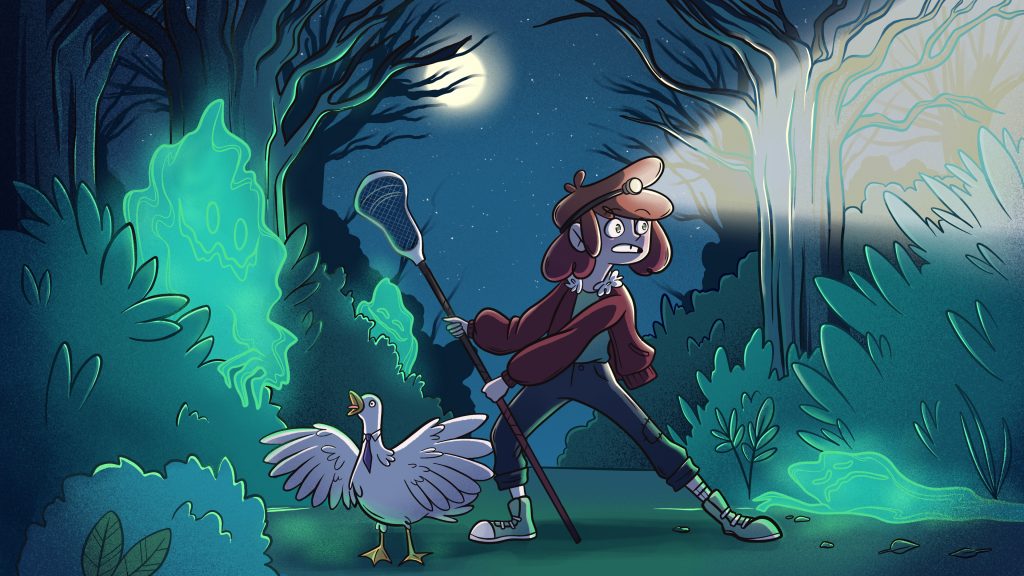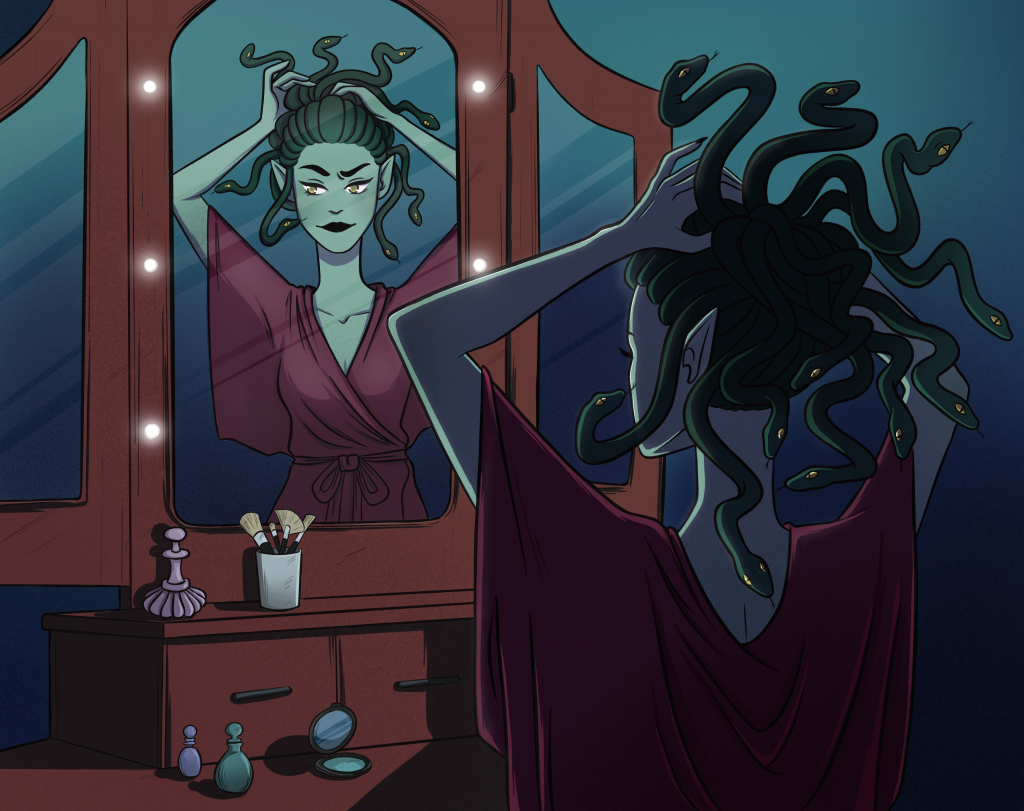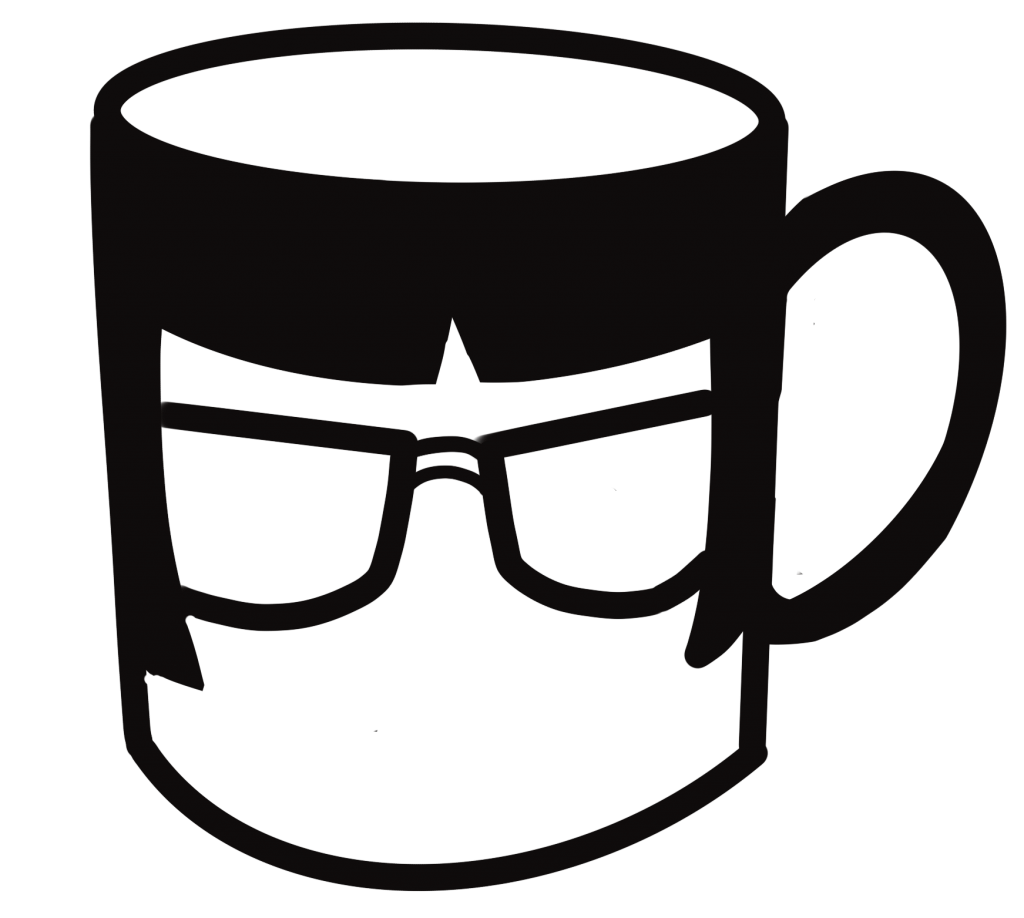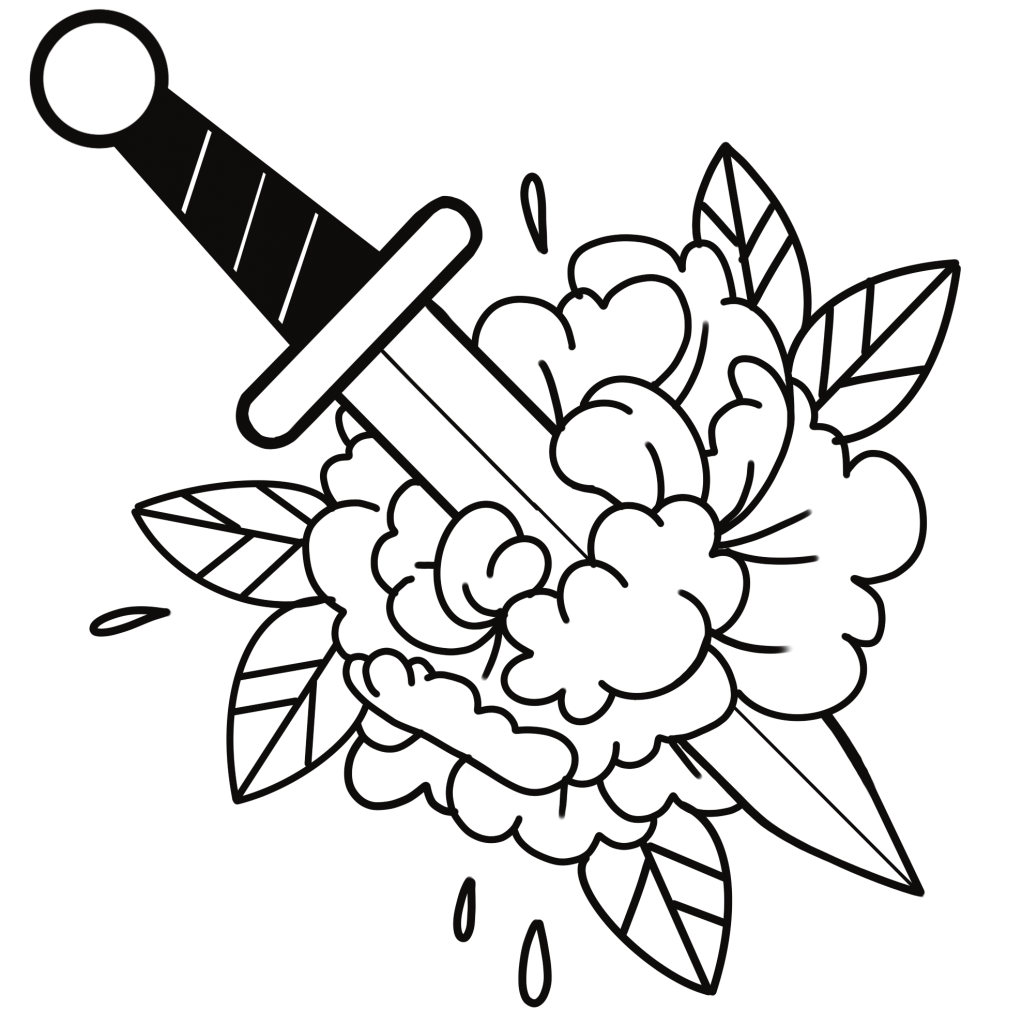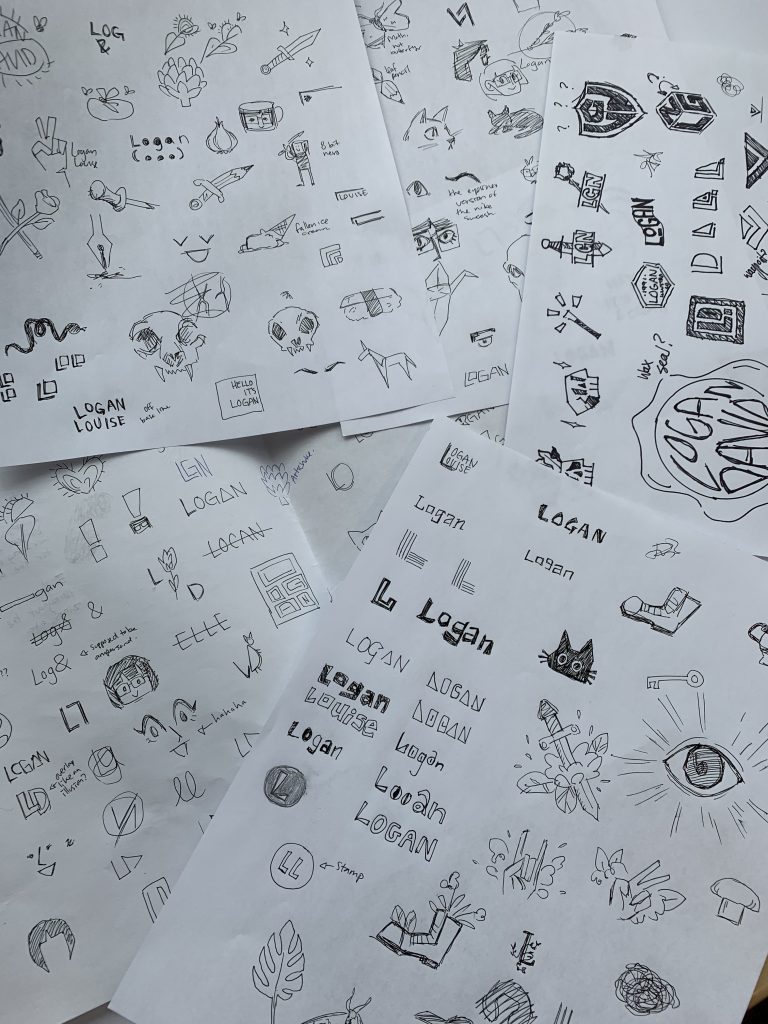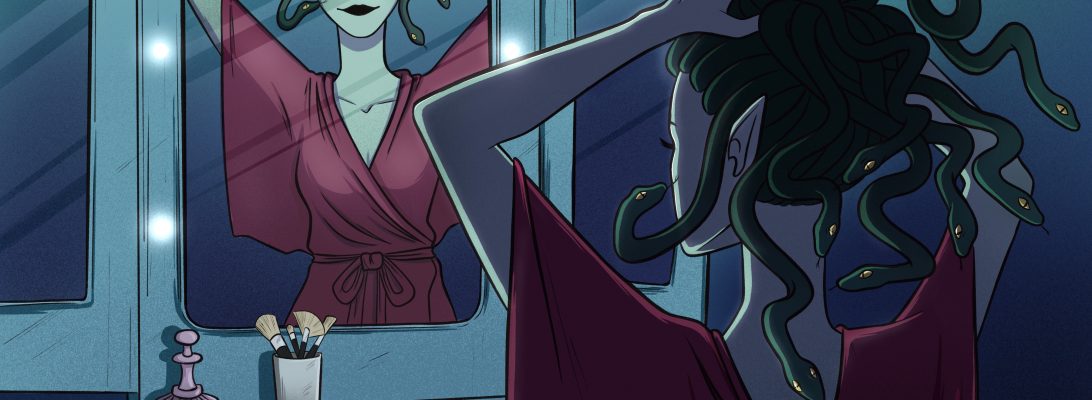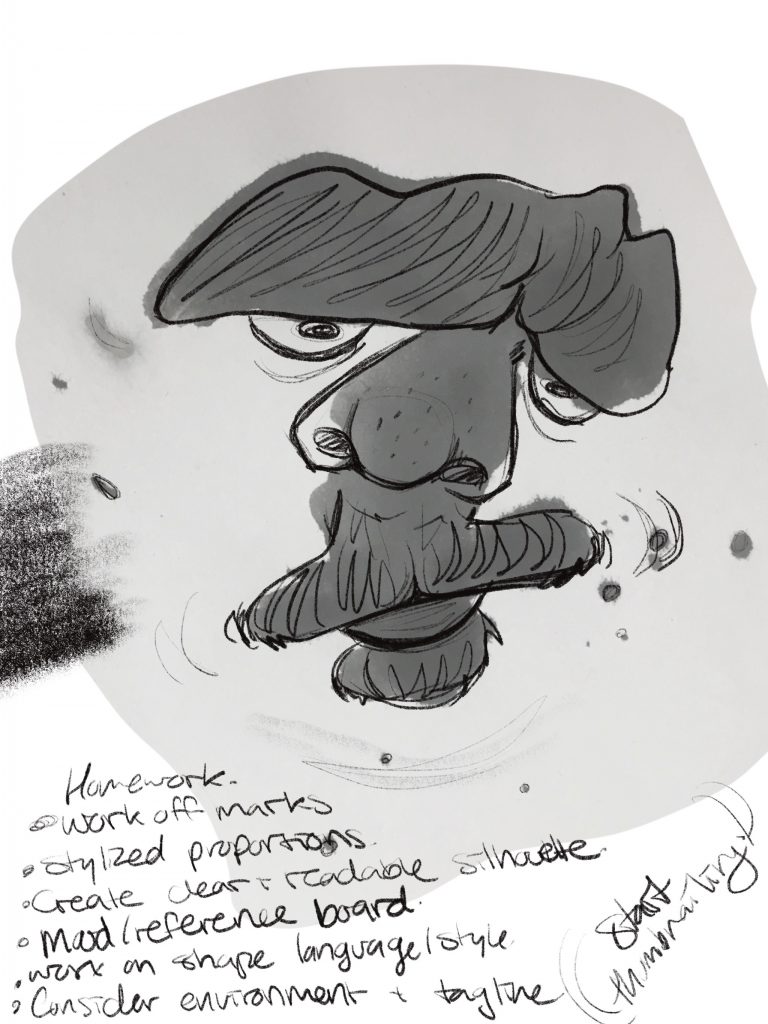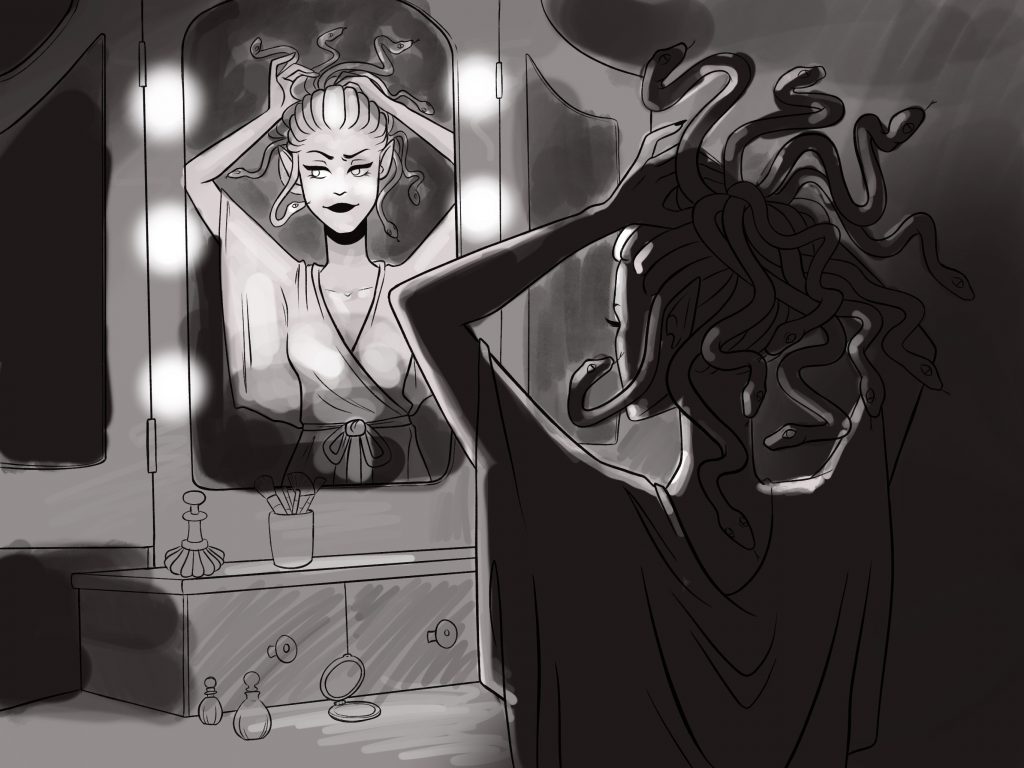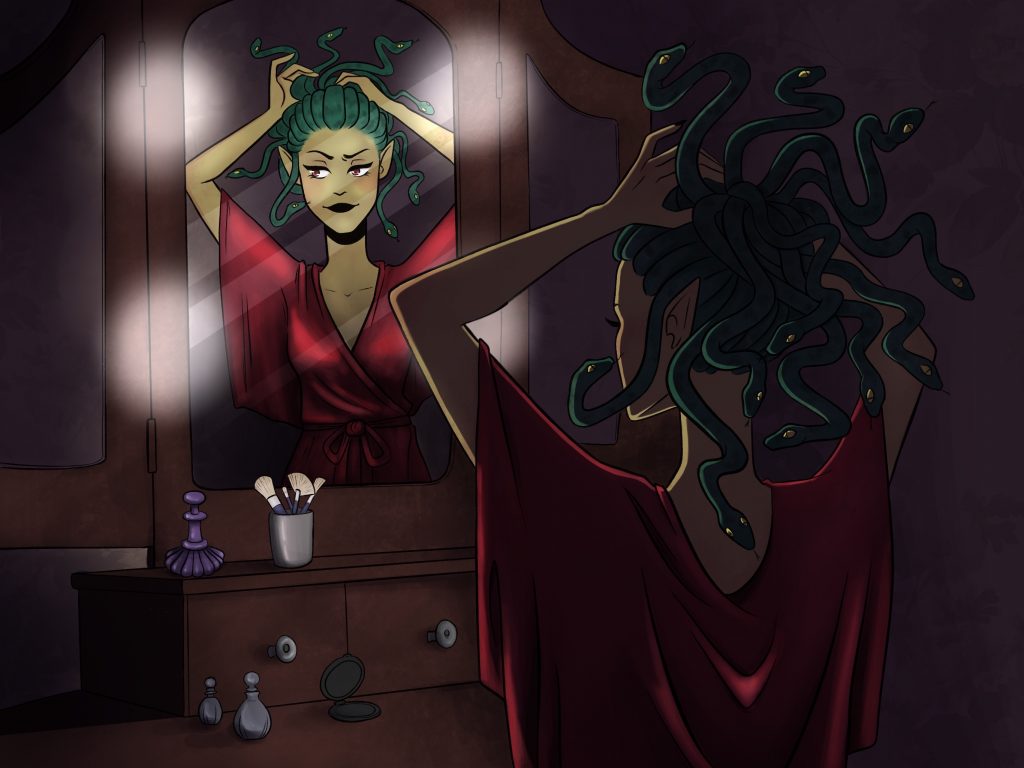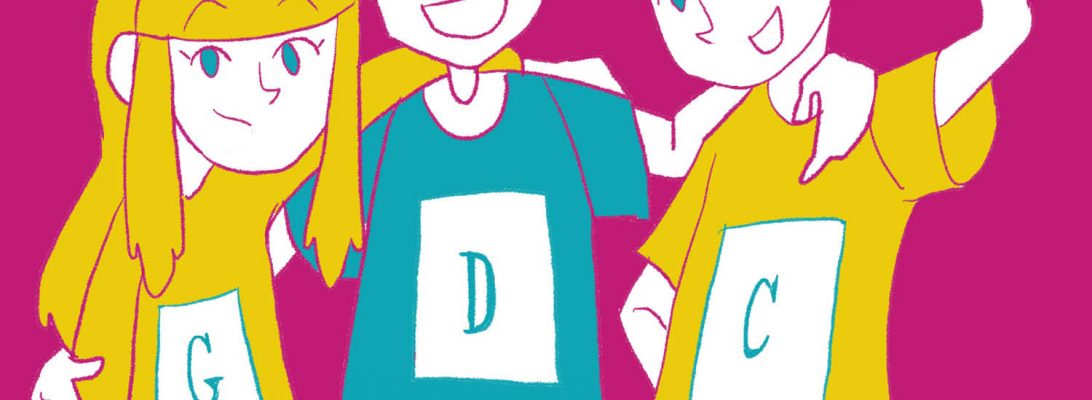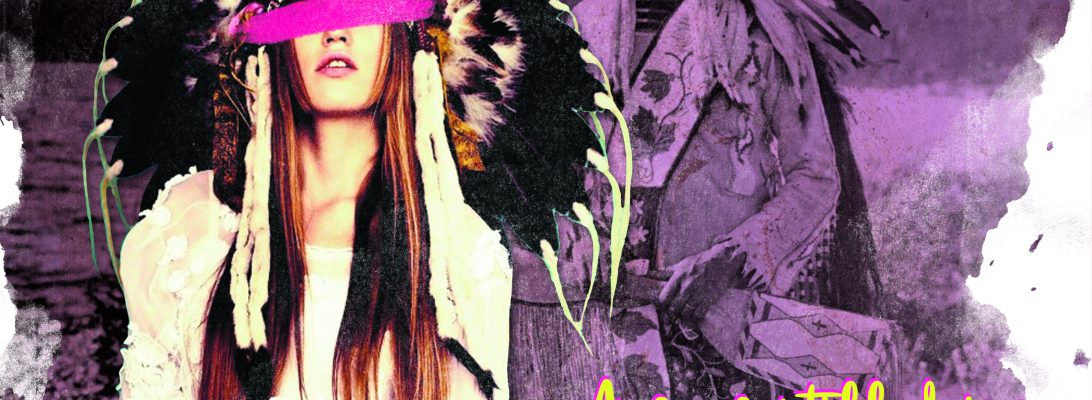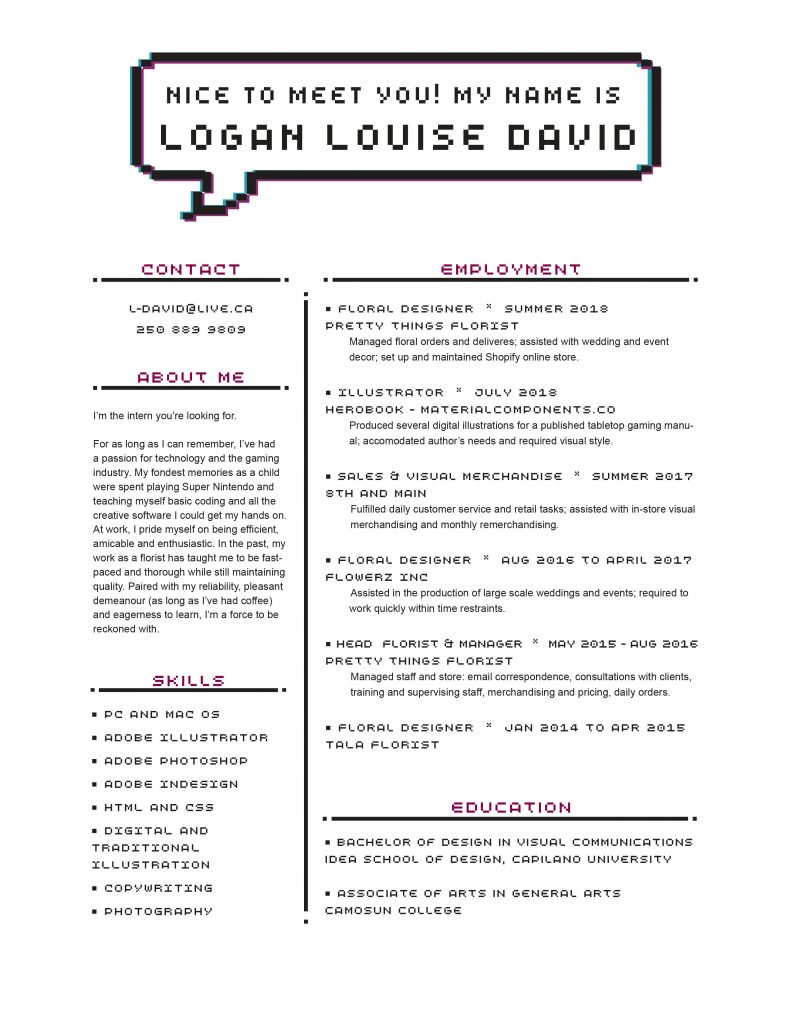Action to Action: The most common transition in comics. This is where the first panel is the beginning of an action and the second is the end. They’re often dynamic and show “movement”. In some cases, multiple panels might be used if the action is long or complicated.
Aspect to Aspect: This transition is often used to set the mood and subtly entice the reader. This is where each panel shows a different subject, often not a part of the sequence or story, but is instead meant to observe the surroundings. It is used to pace comics and create a certain mood—longing, discomfort, apprehension, etc.
Caption: A text box, separate from the speech/dialogue bubbles, used to give the narrator an inner voice. Can be used to further storytelling and get insight into the character’s thoughts. I’ve noticed a lot of western superhero comics use it at the beginning of each issue, almost to fill the reader in on what happened since last issue.
Cartoon: To put it simply, it’s a very simplified representation of something or someone. Cartoons can vary in detail and completion, but they’re often very distinguishable from realism in their style. Cartoons can have big eyes, simplified and blocky hair, basic lines for noses and mouths, etc. Cartoon styles are distinguishable among artists and add a lot of character to the medium in which they’re used!
Comic: In Scott McCloud’s words, comics are “juxtaposed pictorial and other images in deliberate sequence, intended to convey information and/or to produce an aesthetic response in the viewer.” More or less, they’re sequential images that may or may not tell a story and are often illustrated. I think the definition can vary in many, many different ways and it’s hard to nail down a true meaning to the word. “Comic” could very much be subjective! To me, it’s storytelling in the form of sequential illustration (and sometimes with words).
Composition: In comics, composition is extremely important. It all comes down to what the reader can see, and the author/illustrator has the job of making the comic as legible and seamless as possible (if basic storytelling is their goal). Even the arrangement of panels comes into play and must follow the rules of how a person reads in their respective culture.
Graphic Novel: In my opinion, “graphic novel” is just the term for a comic when people think the word “comic” is too childish. Realistically, graphic novels are longer than your average serialized comic and usually are released in novel form, rather than in issues. Graphic novels are popular among short series that wouldn’t benefit from serialization.
Gutter: The space between comic panels/frames. These can be crucial in that they’re the space in which the reader is intended to piece together the two frames. They can vary in size and shape as well as time span and even location. The author has a great task of making gutters effective and compelling.
Icon: An icon is an image that is universally (in most cases) used to represent a person, place, thing or idea. The rendering and style should have no effect on the readability, and readers should be able to understand what the icon is regardless of art style. Icons can be anything from religious symbols to flags to widely used logos to signs.
Indie Comic: Indie Comics are also known as Alternative Comics. These are published by smaller companies, often written by lesser known authors/artists, and often are for more mature audiences. They aren’t your typical serialized superhero comics or manga. They originally stemmed from the “underground comix” of the mid 70s but have since become massively popular for their complex subject matter and compelling stories.
Issue: Particularly in Western Cultures, comics are often published as serialized issues. This practice goes back to the early days of Superhero comics and has since continued to today. Although graphic novels and manga have become massively popular over recent years, superhero comics and many others are still published as weekly, biweekly or monthly issues. This maintains the novelty while also continuing the tradition of “collecting” issues. Because of this, some issues gain value over time and can be sold for far more than their market price. (I once sold a copy of Detective comics for $150!)
Layout: The layout is simply how the panels, gutter, spreads, etc. are all… laid out on the page. This can vary based on art style and storytelling, causing drama, evoking an emotional response, depicting time and space, to just simply getting the story across.
Manga: Japanese comics! Manga has a drawing style that is native to Japanese artists, but has been reworked and adapted by many North American artists today. They’re often considered to be “low brow”, but I think some of the best storytelling comes from manga, despite how convoluted and outlandish they tend to be.
Moment to Moment: This transition is used in a short amount of time, making the scene last as long as possible. With this, the scene is able to appear tense, slow, or frustrating. By lingering on one scene (or an aspect of a scene) it gains significance in the story.
Non Sequitur: A transition between two panels that… have pretty much nothing to do with one another. In many cases, this can be used to advance time or to skip between scenes/characters. If used poorly, they can look chaotic and mismatched, but maybe that’s what the author was going for in the first place.
Omnibus: A large volume that contains a complete work or a series of works. In the case of comic books, many issues or short graphic novels are compiled into an omnibus for convenience, and as a collector’s item. Personally, I think they’re a bit inconvenient because they tend to be HUGE and I can’t see myself carrying around something twice the size of a biology textbook to read on the bus.
Panel: Simply, it’s the box (or contained area) that holds the image and text within a current scene. An individual frame. Sometimes it’s just a drawing, sometimes it’s just words, but it’s that single moment in time depicted in the comic. I don’t know how else to explain this.
Pause Panel: A “silent” panel in a comic, usually leading up to an action of a punchline. Much like the Moment to Moment transitions, these can be used to create tension and suspense in a story.
Point of View: Who’s telling the story? While the vast majority of comics are drawn in Third Person (are there any first person illustrated comics?), they’re often narrated in first person. Or Third person limited. Sometimes Omniscient. Anyways, the point of view can vary depending on series and country of origin. Many North American Superhero comics use first person storytelling in the point of view of whichever character is featured. Manga, on the other hand, typically have a more omniscient approach with less narration.
Scene to Scene: A transition that moves the reader through time and/or space. It’s often used in order to skip the boring, fluffy bits that would’ve taken place in between scenes. Nobody wants a boring comic, so scene to scene is the way to go.
Splash Page: A panel that takes up the entirety of a page. This is for scenes that need a lot of emphasis (“wow” factor). They’re also used as beginnings or endings, as they can act well as a title page or a cliffhanger/resolution in many cases.
Speech Bubble: When a character speaks in a comic, their dialogue is often within a speech bubble! These can have many different characteristics and can help set the mood. They can be jagged (angry), rounded (friendly), bubbly (thoughtful), or limp (weak/tired)—the options are endless. If the author is feeling meta, they can even acknowledge the existence of speech bubbles in their stories or have the characters interact with them (though it’s not very common).
Subject to Subject: This is a transition that depicts different elements of the same scene. It can be several different characters reacting to the same scene or a different perspective on the same scene. Like many of the other transitions, it’s typically used for dramatics.
Symbol: A recognizable icon that doesn’t need to be clarified. A popular example would be the emblems that superheroes wear on their chests—you don’t need an explanation, because you know the S stands for Superman. The people of Gotham City aren’t confused when the Bat symbol lights up the sky, they know exactly what it means.
Volume: Whereas an issue is a weekly/biweekly/monthly story, a volume is a collection of issues… but not quite as big as an omnibus. Usually they contain anywhere from 5-8 chapters/issues. Manga is almost exclusively published in volumes, because the serialized “issues” are typically released through magazines… at least, for the big name series.
Webcomic: An independently made, independently published comic, usually not-for-profit (though I’m happy to see many artists are getting the support they deserve now). There are many sites to read webcomics, and they vary in skill level, meaning anyone can make one! If you’re an aspiring comic book writer, this is the perfect place to start.
Zine: A self-published short magazine, usually in small circulation and made through collaboration. Zines can feature any kind of subject matter and are typically limited print. They can contain anything from short stories to comics to illustration and are a passion project among communities.
